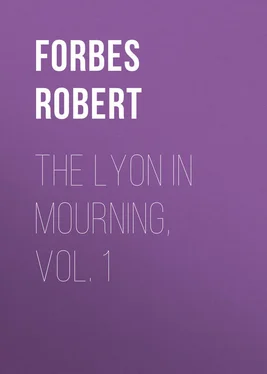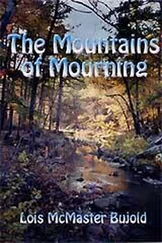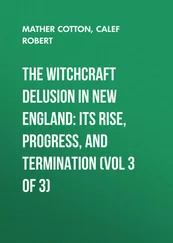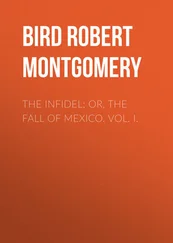Robert Forbes - The Lyon in Mourning, Vol. 1
Здесь есть возможность читать онлайн «Robert Forbes - The Lyon in Mourning, Vol. 1» — ознакомительный отрывок электронной книги совершенно бесплатно, а после прочтения отрывка купить полную версию. В некоторых случаях можно слушать аудио, скачать через торрент в формате fb2 и присутствует краткое содержание. Жанр: foreign_antique, foreign_prose, Биографии и Мемуары, на английском языке. Описание произведения, (предисловие) а так же отзывы посетителей доступны на портале библиотеки ЛибКат.
- Название:The Lyon in Mourning, Vol. 1
- Автор:
- Жанр:
- Год:неизвестен
- ISBN:нет данных
- Рейтинг книги:3 / 5. Голосов: 1
-
Избранное:Добавить в избранное
- Отзывы:
-
Ваша оценка:
- 60
- 1
- 2
- 3
- 4
- 5
The Lyon in Mourning, Vol. 1: краткое содержание, описание и аннотация
Предлагаем к чтению аннотацию, описание, краткое содержание или предисловие (зависит от того, что написал сам автор книги «The Lyon in Mourning, Vol. 1»). Если вы не нашли необходимую информацию о книге — напишите в комментариях, мы постараемся отыскать её.
The Lyon in Mourning, Vol. 1 — читать онлайн ознакомительный отрывок
Ниже представлен текст книги, разбитый по страницам. Система сохранения места последней прочитанной страницы, позволяет с удобством читать онлайн бесплатно книгу «The Lyon in Mourning, Vol. 1», без необходимости каждый раз заново искать на чём Вы остановились. Поставьте закладку, и сможете в любой момент перейти на страницу, на которой закончили чтение.
Интервал:
Закладка:
23
See fuller references to this incident of the war at f. 155. According, however, to detailed accounts from the other side, it was deliberately done, and caused the death of several of the poorer townspeople, who were allured into the church in the hope of getting stores the rebels could not carry away. — Scots' Magazine , 1746, p. 221.
24
William Baird in Perth. See f. 464 for the history of this case.
25
St. Simon and St. Jude's Day. – F.
26
Probably Mr. Thomas Wilson, then prebendary, afterwards dean in 1764.
27
See a narrative of Mr. Buchanan's case at f. 100, and about the death of Mr. Stewart, f. 107.
28
These follow on this and subsequent pages.
29
See a letter to his father on the same occasion, f. 381 infra . According to Bishop Forbes, Mr. Deacon was the son of Dr. Thomas Deacon, who, he adds, (f. 40 infra ), was a non-jurant bishop in Manchester. But another contemporary authority describes him as the son of an eminent and wealthy doctor of medicine in Manchester, and states that Thomas was educated at the university to qualify him for the same professions. – 'History of the Rebellion,' extracted from the Scots' Magazine , 1755, pp. 294-301. The fact is that Dr. Deacon engaged in both professions. Three of his sons joined the Prince. Thomas was appointed a lieutenant in the Manchester Regiment, and so was his brother Robert, while Charles, the youngest, aged about seventeen, was made an ensign. All were taken at the surrender of Carlisle, and sent prisoners to London. Robert became so ill on the way that he was left at Kendal, and died there. Charles was reprieved, though he was taken to the place of execution under a military guard to see his brother and others suffer. The head of Thomas Deacon, with others, was sent to Manchester to be stuck up on the Exchange there. His father was the first to come and gaze upon it, and saluting it, thanked God that he had had a son who could die for his lawful prince. Dr. Deacon only survived his son about six years, and the inscription on his tombstone is worthy of note: – 'Here lie interred the remains (which through mortality are at present corrupt, but which shall one day surely be raised again to immortality and put on incorruption) of Thomas Deacon, the greatest of sinners and most unworthy of primitive bishops, who died 16th February 1753, in the 56th year of his age. – Axon's Annals of Manchester , pp. 89-90.
30
This book was compiled by Mr. Deacon's father, a non-jurant bishop in Manchester. – F.
31
Samuel Maddock or Maddox, an apothecary's apprentice in Manchester. He was appointed ensign in the Manchester Regiment, and after being taken prisoner became king's evidence. Some witnesses averred that Maddox held a bad character; that as apprentice he had wronged his master, and was not worthy of credence even upon his oath. – 'History of the Rebellion,' extracted from the Scots' Magazine , 1755, pp. 279 et seq. See also ff. 91, 98 infra .
32
Maddox deponed against Mr. Deacon, that he 'sat at the table at the Bullhead at Manchester, took down the names of such as enlisted in the Pretender's service, and received a shilling for each; and when he was writing he employed himself in making blue and white ribbons into favours, which he gave to the men who enlisted.' – 'History of the Rebellion,' ut supra , p. 289.
33
Thomas Syddall was a barber in Manchester and acted as adjutant of the Manchester regiment. Some interesting particulars about him and his family will be found in Manchester Collectanea , vol. lxviii. of the Chetham Society, pp. 208-225, where this speech is also printed.
34
Thomas Syddall, a blacksmith, who on 10th June 1715, the anniversary of the birthday of the Old Pretender, headed a party of rioters in Manchester, and wrecked Cross Street Chapel. He was seized and sentenced to the pillory and imprisonment in Lancaster Castle. The Jacobite army, however, released him and some of his comrades, but he was retaken at Preston, and after trial at Liverpool was executed at Manchester on 11th February 1716. – Axon's Annals of Manchester , p. 76.
35
Captain John Vere, or Weir, in service under the Duke of Newcastle. He had been taken prisoner by the rebels about the time they held Carlisle, and was employed by them in negotiating the terms of capitulation.
36
Or Beswick. A Manchester linen-draper, aged about thirty-one years. He was known by the soubriquet of 'Duke' in the rebel army. – 'History of the Rebellion' in Scots' Magazine , pp. 295-299.
37
Arthur Elphinstone, sixth and last Lord Balmerino and fourth Lord Coupar, only succeeded his half-brother in these peerages on 5th January 1746. As he indicates in his speech, he forsook the service of King George the First in 1715, and joined the Earl of Mar, escaping abroad after the battle of Sheriffmuir. His father secured his pardon, and returning home he married Margaret, daughter of Captain John Chalmers (or Chambers) of Gogar, in Midlothian, but by her had no issue. An account of his trial and execution, with some notice of his life and family, and a portrait of him at the time of his death, was published in pamphlet form (12mo, pp. 50) at London in 1746. A fuller report of the above speech is given at f. 108, some panegyrical verses at ff. 112 and 403 et seq. ; and a singular letter addressed to Lord Balmerino three days before his death with a later reference to Lady Balmerino in connection therewith at f. 561 et seq. Lady Balmerino died at Restalrig, near Edinburgh, on 24th August 1765.
38
He was the son of Ronald Mor of Tir-na-dris, second son of Archibald MacDonald of Keppoch, and so nephew to the famous 'Coll of the Cows.' — History of the MacDonalds , p. 490. He suffered death at Carlisle. See f. 106. He is said to be the original of Sir Walter Scott's Fergus MacIvor in Waverley . His sword, a genuine Andrew Ferrara , afterwards came into the possession of the Howards of Corby Castle.
39
See ff. 979-982.
40
See further references to the Major, and his presenting the Prince with the first horse he rode in the war, the capture he had made in this first skirmish, ff. 357, 360, 641.
41
Dame Magdalene Scott, widow of Sir William Bruce of Kinross, a noted Jacobite, in whose family Mr. Forbes lived until his marriage.
42
Captain Hugh Clerk, in Leith.
43
His daughter, Mary.
44
Alexander Erskine, fifth Earl of Kellie. He had taken part in the Rebellion, but surrendered to the Government, and after over three years' imprisonment in Edinburgh Castle, was released without being brought to trial.
45
Alexander MacDonald of Kingsburgh, in Skye, factor to Sir Alexander MacDonald. For concealing the Prince in his house he was arrested, carried to Fort Augustus, and sent by a party of Kingston's Horse to Edinburgh. He was committed prisoner to the Castle on 2nd August. See his own history in the sequel.
46
Patrick Murray, silversmith.
47
Lord Covinton. – F.
48
Интервал:
Закладка:
Похожие книги на «The Lyon in Mourning, Vol. 1»
Представляем Вашему вниманию похожие книги на «The Lyon in Mourning, Vol. 1» списком для выбора. Мы отобрали схожую по названию и смыслу литературу в надежде предоставить читателям больше вариантов отыскать новые, интересные, ещё непрочитанные произведения.
Обсуждение, отзывы о книге «The Lyon in Mourning, Vol. 1» и просто собственные мнения читателей. Оставьте ваши комментарии, напишите, что Вы думаете о произведении, его смысле или главных героях. Укажите что конкретно понравилось, а что нет, и почему Вы так считаете.












